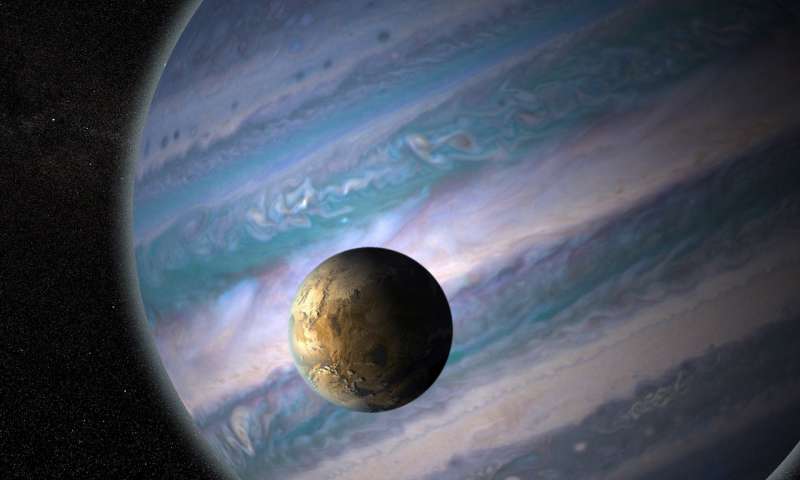While we’re all thinking of finding alien life on other planets, scientists are looking for life on alien moons.

When humans first thought about extraterrestrial life, they thought of places like the Moon or Venus. Modern studies quickly showed that those places are currently uninhabitable, so alien life projections started focusing on Mars. Mars was potentially habitable in the past, but not so much now. Instead, the most likely places in our solar system to host life (outside of Earth) are frozen moons like Europa.
Even though satellites like Europa are frozen on the surface, the stress and friction from their planet’s gravitational pull generate great heat beneath the surface, and astronomers estimate that these places host liquid oceans beneath the surface — liquid water where life can develop. So this type of frozen moon around giant planets are quite interesting for astronomers, which is why this finding is so important.
In a paper forthcoming in The Astrophysical Journal, researchers at the University of California, Riverside, and the University of Southern Queensland have identified more than 100 giant planets that might host this type of moon, by scouring through data from the Kepler telescope. To make matters even more attractive, all these giant planets have orbits in the so-called habitable zone — not too close, and not too far from their parent star.
“There are currently 175 known moons orbiting the eight planets in our solar system. While most of these moons orbit Saturn and Jupiter, which are outside the Sun’s habitable zone, that may not be the case in other solar systems,” said Stephen Kane, an associate professor of planetary astrophysics and a member of the UCR’s Alternative Earths Astrobiology Center. “Including rocky exomoons in our search for life in space will greatly expand the places we can look.”
Researchers have only found the planets themselves and have no direct information about any potential moons. However, from what we’ve seen in our own solar system, this type of planet does tend to have several moons.
Scientists speculate that if they do exist, some of these moons may be prime areas to look for extraterrestrial life because they get energy not only from their parent star but also from their parent planet.
This will help scientists develop new, better telescopes, that could look for potential biological signatures on these moons — yet another stepping stone on our long search for alien life.
“Our follow-up studies will help inform future telescope design so that we can detect these moons, study their properties, and look for signs of life,” said Michelle Hill, an undergraduate student at the University of Southern Queensland who is working with Kane and will join UCR’s graduate program in the fall.
Journal Reference: Exploring Kepler Giant Planets in the Habitable Zone, arXiv:1805.03370 [astro-ph.EP] arxiv.org/abs/1805.03370


